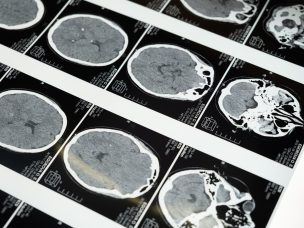Neuromyelitis Optica Spectrum Disorder
Brain Age Gap in NMOSD Patients Compared to Healthy Controls
Machine learning-based brain age calculations were found to be significantly predictive biomarkers in patients with NMOSD and RRMS. Neuroimaging-based “brain age” is a commonly used biomarker for quantifying the progress of both brain disease and aging [1]. Biological brain age is usually estimated by using various approaches for interpreting magnetic resonance imaging (MRI) data. There...
Comparing Rituximab Efficacy in Patients with NMOSD and MOGAD
Rituximab shows promising effects in patients with NMOSD, but is less effective in patients with MOGAD. The efficacy of rituximab in patients with myelin oligodendrocyte glycoprotein antibody-associated disorders (MOGADs) is not fully understood but has been shown to be relatively greater for aquaporin-4-IgG-positive neuromyelitis optica spectrum disorders (AQP4-IgG+NMOSDs). This study, published in the Journal of...
Non-Immune Comorbidities in Patients With NMOSD
Patients with NMOSD who have non-immune-related comorbidities face unique challenges in their treatment. This study examined their demographics and risk factors. Among patients with neuromyelitis optica spectrum disorders (NMOSD), those with comorbidities may have unique clinical features, prognoses, and treatment outcomes. Comorbidities may affect various systems of the body, and this study, published in the...
The Efficacy of Contemporary NMOSD Treatments Over Time
This study provides a longitudinal analysis of NMOSD outcomes using modern treatment methods and finds more promising results than past studies have shown. Even in patients who undergo immunosuppressive or immunomodulatory therapy, neuromyelitis optica spectrum disorder (NMOSD) tends to follow a progressive disease course with step-wise accumulation of disability over time. The influence of aquaporin-4...
Elevated dsDNA in Patients with NMOSD
The role of dsDNA in the cerebrospinal fluid of patients with NMOSD is not fully understood, but researchers have found that the levels are higher in this population. Neuromyelitis optica spectrum disorder (NMOSD) causes inflammation in the central nervous system and results in severe myelitis and optic neuritis. Double-stranded DNA (dsDNA) has been found to...
Frequency of Asymptomatic Optic Nerve Enhancement in Patients With NMOSD
Asymptomatic nerve enhancement in patients with NMOSD can make assessing clinical trial results more complicated. This article analyzes how commonly this type of enhancement occurs, and what effects that may have. Nerve enhancement in cases of aquaporin-4 (AQP4)-immunoglobulin G (IgG)-positive neuromyelitis optica spectrum disorder (NMOSD) is not common, but does occur in some patients. A...
Satralizumab Treatment Safety in Patients with NMOSD
Satralizumab is a new medication being used to treat NMOSD. This study examines whether it is safe and effective for use in long-term therapy. Satralizumab is a medication used to treat neuromyelitis optica spectrum disorder (NMOSD). Two phase 3 trials are described in this study, SAkuraSky, which used satralizumab in combination with baseline immunosuppressive therapy,...
Comparing Early-Onset Symptoms Among NMOSD and Other Autoimmune Conditions
NMOSD and other autoimmune conditions such as MOGAD can present as intracranial infections during early onset. This study attempts to find the key ways that these conditions differ to allow for better clinical diagnosis. Many autoimmune diseases of the central nervous system, including NMOSD, autoimmune glial fibrillary acidic protein astrocytopathy (A-GFAP-A), and myelin oligodendrocyte glycoprotein...
The Efficacy of Novel NMOSD Treatments
NMOSD treatments vary in efficacy, but there are not many highly effective options. Novel therapies provide greater diversity of mechanisms and targets for a more well-rounded approach, but require additional research to determine their efficacy. Neuromyelitis optica spectrum disorder (NMOSD) is characterized by demyelination in the central nervous system and the presence of the aquaporin-4...
More Medical News














